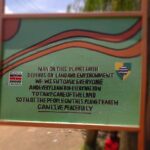
Mtaa Safi (Clean Neighborhood)
March 14, 2014Waste Management Stakeholder Survey
June 27, 2014This post was cross-posted from Spatial Collective‘s blog.
In November 2013 Spatial Collective conducted a household survey of 1000 randomly-selected households in Mathare. The focus of the research was to explore the existing and available information systems in Mathare, mainly to gather information on availability, accessibility, and use of mobile telephony and the Internet, as well as to gain a deeper understanding of waste management activities in the area. We were interested to see whether some sort of technological (ICT) solution could be possible to raise awareness and address the issue of waste management in Mathare and broader in Nairobi.
During the initial planning phase, Spatial Collective organized a series of consultative meetings and interviews with the selected citizens and opinion leaders. Through careful considerations of local realities we then designed a public opinion survey targeting 1000 households in Mahtare (completing 980 interviews). The first section of the survey focused on the basic demographic information of the interviewees, such as, age and gender, education, number of people in the households, their employment and location of residence within the slum together with the number of years spent living in Mathare. The second section of the survey consisted of ICT-related questions including information on ownership, accessibility and use of mobile phones, computers, and the Internet. The third and final section of the survey contained questions about people’s perceptions and habits concerning waste handling and waste management.
The survey was conducted in four of the six wards in Mathare: Hospital, Mabatini, Ngei, and Mlango Kubwa. According to the Kenya National Bureau of Statistics, there are approximately 123,345 people living in these six wards. The wards were selected because of their representativeness of the broader Mathare constituency in the greater Eastlands area of Nairobi.
Prior to starting the survey we were faced with a challenge of how to randomly select 1000 households in an area which does not have street addresses. Professor Steven Livingston from the School of Media and Public Affairs proposed that we superimpose a grid layer, or a fishnet, on top of the satellite imagery of Mathare and then randomly select 1000 of these grid points. These points would then act as randomly selected households. Following Steven’s advice, we created a grid layer where each cell of the fishnet was 9 square meters (or 3×3 meters) large. This is consistent with the size of an average room in both the high-rise and the tin-shack or mud-houses in Mathare. Once the grid was superimposed over the satellite imagery we used a random selection function in Quantum GIS in order to randomly assigning 1000 grid cell locations. Selected grid cell locations were then transformed into coordinates with latitude and longitude information, uploaded into GPS units, and used to navigate to the randomly selected households.
The interviews were conducted by our field team. If the person at a particular location did not want to participate in the survey or if the location of a randomly selected point represented anything else but the household, the surveyor simply moved to the nearest household and conducted the interview there. The surveyors used the android phones to record the interviews using Open Data Kit software. Finally, the location of each completed interview was recorded with the GPS unit and the survey immediately sent into the database through the mobile-Internet connection. In total, 980 interviews were completed, meaning that approximately 0.8% of the population in the area was surveyed.




